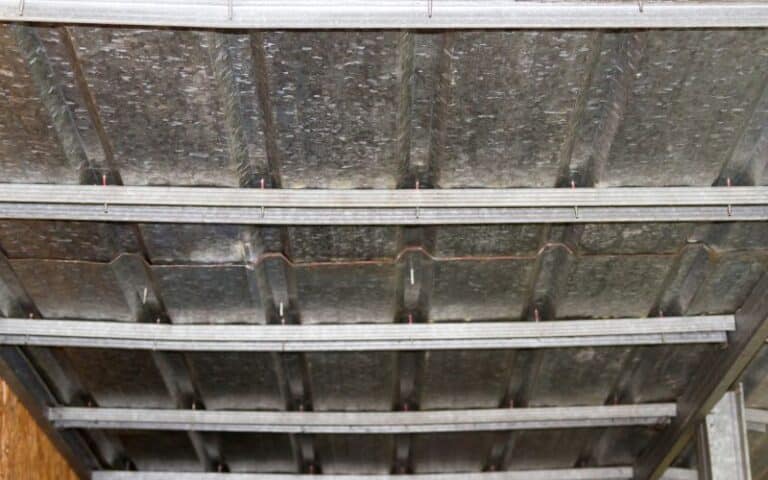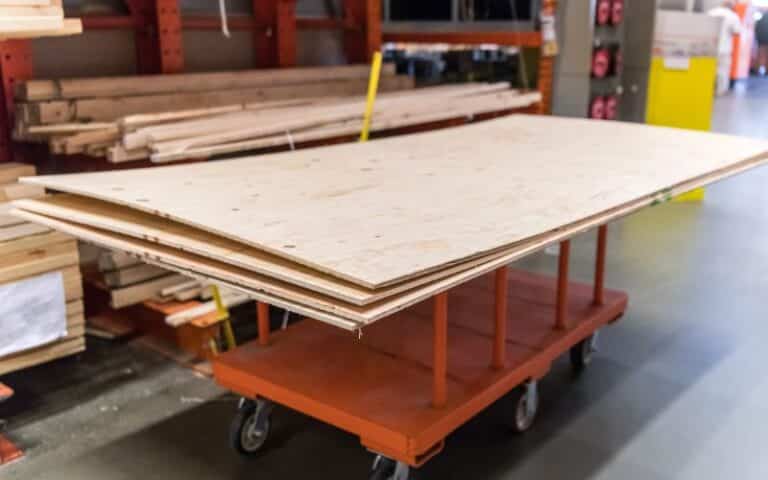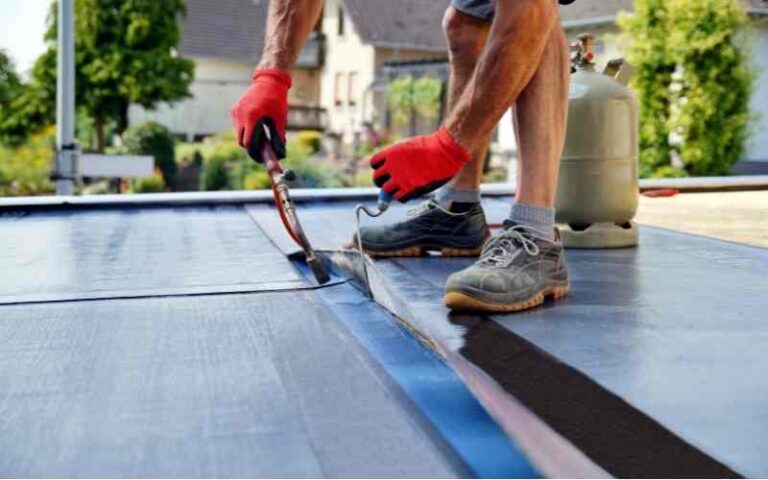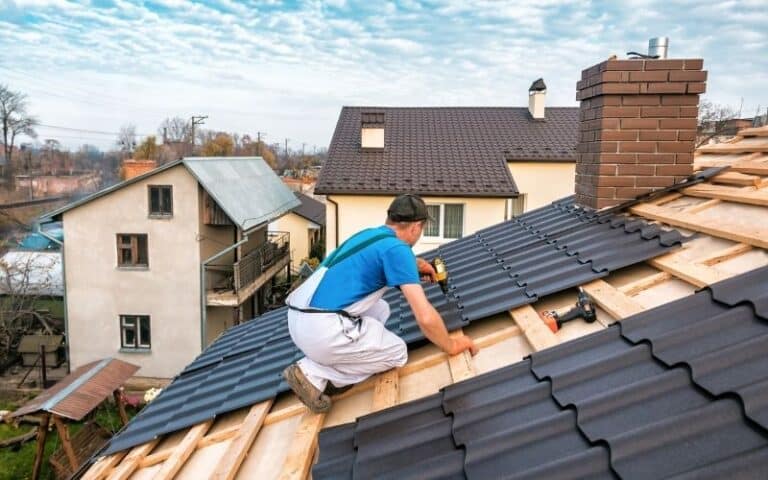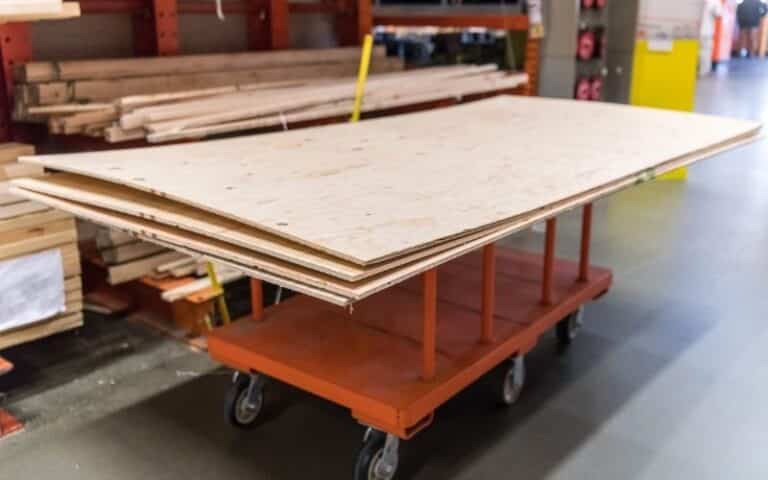Roof underlays and house wraps play seemingly similar roles. They prevent moisture escape into your plywood or home’s walls; function as water and weather-resistant barriers.
Though they’re pretty similar, they differ in a few things, including their mode of operation. Let’s discuss them.
Unlike roof underlays like felt tar paper which are not sturdy, house wraps like DuPont Tyvek house wrap are tough. DuPont Tyvek house wrap is 100% insurance against rips and tears. In addition, it is a more effective weather-resistant barrier than felt tar paper.
Ready for a Roofing Quiz?
Ready for a Drywall Quiz?
Differences Between Roof Underlayment And House Wrap?

It’s no doubt that the differences between these two types of protective coverings can be hard to understand at first glance because of their similarities.
However, a few distinctive features between them include; house wraps being more weather resistant than roof underlay.
Next, roof underlay possesses less perm rating than house wraps, and roof underlayment is on the roof decking.
At the same time, you’ll ideally find wraps on external walls. So let’s discuss them in detail.
#1. Home Wraps Are More Weather-Resistant Barriers Than Roof Underlay
Also known as home wraps, house wraps are materials utilized in covering the structure and walls. Home wraps have been around for many years in different parts of the world.
Manufacturers develop them to ensure facilities against adverse weather, especially in areas where extreme weather conditions are common.
On the other hand, roof tar paper merely allows an extra layer of protection for roofs. Unlike roof tar paper, house wraps like DuPont Tyvek consist of various synthetic substances.
This synthetic makeup makes them a more weather-resistant barrier compared to house wraps.
The American Architectural Manufacturers Association (AAMA) explains weather-resistant barriers as surfaces that avoid air and water penetration to drywalls or structures.
They stop and remove the build-up of moisture present in wall cavities. A weather-resistant barrier must always meet the 2018 International Building Code(IBC 1402.2) requirements.
Apart from the synthetic makeup of home wraps, roof underlays are merely protective layers placed on roofs. They keep out moisture and insect pests; provide a surface for roofing materials.
However, they don’t offer the kind of protection that home wraps provide, such as wind-driven rain and hail protection.
Home wraps are also more weather resistant because of this kind of protection. In addition, the design of home wraps is for it to withstand more wear and tear.
I’m not saying that felt underlay isn’t weather-protective.
The point I’m making is clear. In the case of roof underlay and home wraps, house wraps are preferred for weather resistivity. There are a lot more additions to the weather-resistive nature of home wraps.
For example, high-performance house wraps like DuPont Tyvek have more tear power and temperature resistance, enabling more drainage.
#2. Roof Underlay Possesses Less Perm Rating As Compared To House Wraps
Wikipedia describes perm rating as the rate of water vapor transmission. So when I say house wraps generally have a higher perm rating than roof underlays, I mean house wraps are more vapor permeable.
House wraps are more vapor permeable than roof underlays because they allow water vapor to pass through them. In addition, they contain microscopic holes that allow water vapor to escape.
The design of roof underlay doesn’t so much allow the passage of water vapor the way house wraps do.
As a result, the perm rating of high-performance home wraps like DuPont Tyvek house wraps goes as high as 50 though others may have a lower rating.
Roof underlays, on the other hand, have much lower perm ratings.
I remember seeing a roof underlay on the sidewalls of a structure. One thing that spoiled the scenario the most was that the area was cold and heavy-winded.
Such ideas are not good, even if you apply two layers of felt tar paper. It’s still not ideal.
Moisture build-up in walls or structures can result in the buildup of mold, mildew, or even wood rot. Several damages, including an unhealthy atmosphere for dwellers and the building structure, are another result.
High vapor permeable house wraps will always produce no or little moisture content. At the same time, low vapor-permeable house wraps will have high moisture content.
This high moisture content can cause moisture damage. High or slightly moderate vapor-permeable surfaces or wraps allow drying in no time.
On the contrary, low vapor-permeable covers or wraps do not. In all, we can say roof underlays are low vapor-permeable surfaces.
On the other hand, House wraps are high vapor-permeable surfaces compared to house wraps.
Apart from perm rating and weather resistivity, roof underlay and home wraps differ in their ideal mode of application. Roof underlayment is a waterproof material that is on the roof deck.
It protects the underlying insulation and sheathing from water, moisture, and insect damage.
Conversely, wraps are waterproof materials whose installation is on the sheathing. They’re installed on the exterior walls of buildings to protect them from water damage and moisture damage.
Roof underlayment is a building wrap installed directly on the roof decking. House wraps are similar to roof underlays in that they are both used to protect the building from water damage and mold.
The main difference between them is that house wraps are installed on the wall sheathing, while the installation of roof underlay is on top of the roof decking.
So much as roof underlayment is a significant part of any roofing system and provides a barrier between the roof and the home’s interior. House wraps are another type of protective covering.
Manufacturers produce them from different materials than roof underlayment, but they serve a similar purpose.
Roof underlayment is a layer of protection for the roof, while house wrap is the final layer that protects the home. In addition, felt tar paper helps protect the roof from water and ice damage.
Finally, house wraps majorly seal the place from the water and air infiltration.
Pros And Cons Of Roof Underlayment
Where you have good, there’s always a bad. The pros and cons of roof underlayment are thus below.
Advantages Of Roof Underlayment
As you may know, roof tar paper provides secondary protection to roofs. They safeguard roofs(wood deckings) against water, insect, and moisture damage.
They also function as water and weather-resistant barriers though not so weather resistant.
Disadvantages Of Roof Underlayment
Roof underlays take more time to install. Asphalt felt paper is not so weather resistant. It’s also more viable to wear and rip in no time.
Pros And Cons Of House Wraps
There’s no doubt that home wraps are beneficial. But they also have drawbacks. Let’s look at both.
Advantages Of House Wraps
The benefits or rather advantages of house wraps are visible. They prevent mold build-up, rot, and other moisture-related issues.
They also enhance your pleasure and comfortability all year round. Home wraps have their installation process easier and faster since they’re larger and broader.
Not leaving the essential features of home wraps, they enhance effective vapor permeability and water and weather resistivity.
High-performance home wraps like DuPont Tyvek maintain their Integrity even in windstorms; resist rip and tear.
Disadvantages Of House Wraps
Home wraps aren’t so disadvantageous. One major issue I’ve noticed is improper installation.
Improper installation of home wraps causes more harm than good; its performance will be less effective. If not handled correctly during installation, they could also impair.
For example, tiny holes or openings on home wraps prevent water from escaping your wall or structure. You probably know what the result could be.
Summary
Roof underlays and home wraps both functions as protective coverings. But when it comes to weather resistivity, house wraps function more efficiently than roof underlays.
So you ought to be careful not to use them interchangeably as replacements.

